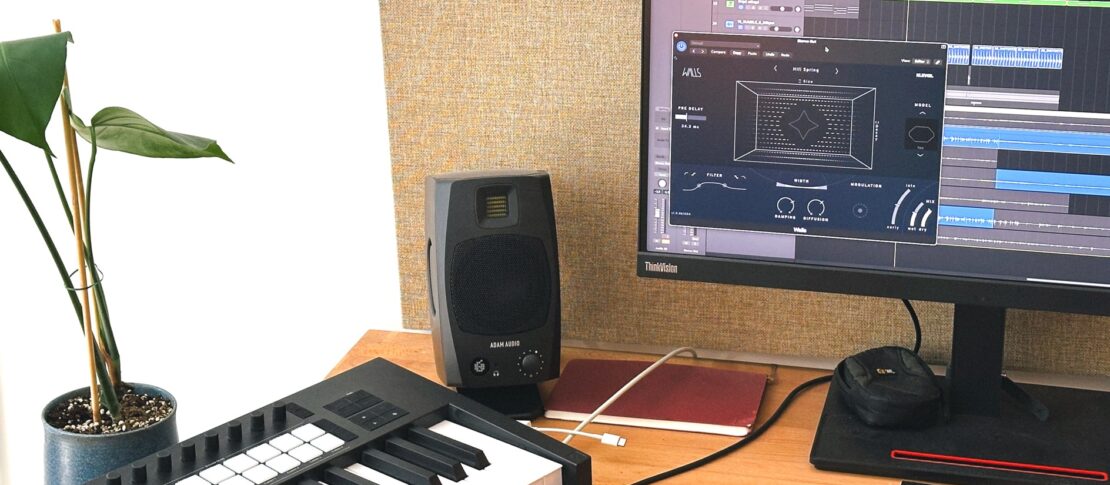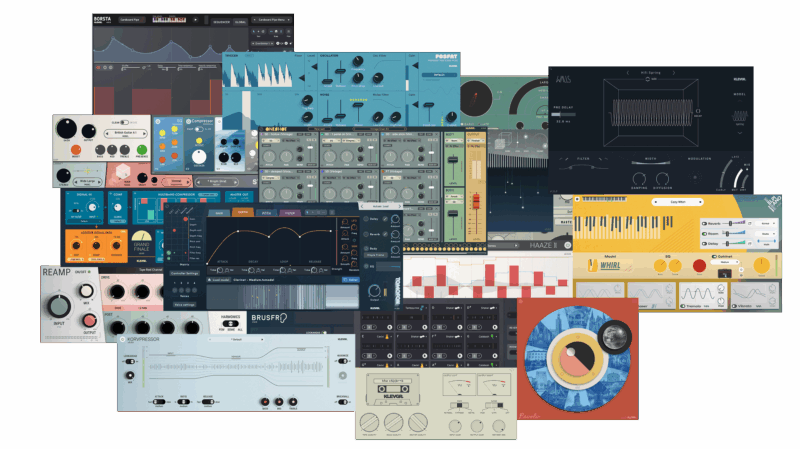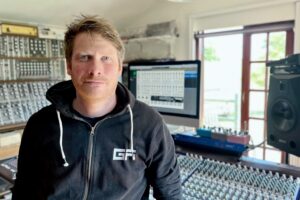
Inside Klevgrand: Pushing boundaries with innovative plugins
Plugins are an essential tool in today’s audio production and long gone are the days when these little helpers only tried to replicate the sound of their hardware counterparts. More than that, they have become a huge field of sound innovation in their own right, allowing creatives to manipulate their audio material in truly unreal ways. For this article, we have had the pleasure of talking to Tobias Ensgström, CEO of Klevgrand, to talk about the future of plugin designs and more.
Hi Tobias! For people who may be unfamiliar with Klevgrand, could you please tell us a little bit about the company?
“We’re a music software company and creative studio run by a group of dedicated musicians, producers, and developers based in Stockholm, Sweden. Most of us have a long background in music and/or are still active in creating music alongside our work at Klevgrand today. In 2015, we started making plugins and have since grown organically into a team of 12 across multiple locations.”
At Klevgrand, do you have a philosophy when it comes to the design of your plugins?
“We always aim to create interfaces that are inclusive and not intimidating. We want to make design that feels friendly. That said, we don’t follow any strict design philosophy. Our goal is to create products that:
- Don’t get in the way of the user experience and support a natural workflow.
- Inspire creativity and add energy to the user’s projects.
- Avoid looking too much at other people’s products.
By following our intuition, listening to our own experience as musicians, and embracing creative flow, we often reach these goals. Plus, we’re having fun along the way.
With our latest release ‘Walls’, we revisited the tactile and visual design approach we first explored with Korvpressor a few years ago. Instead of treating the interface as just a static visualization, we’ve made it interactive—something you can actually manipulate. This shift makes the experience more tactile, shaping not only how the plugin feels but also how users listen and what they can achieve creatively. At that point, it matters less whether the display is a “correct” representation of the process. What really counts is the relationship you build with the tool.”
The overall look of plugins has changed a lot in the last 10 years or so. What do you think is driving this change?
“We think the change is largely driven by a broader and more diverse user base. More people from different backgrounds, both from other creative fields and from completely unrelated areas, have started making music. This has challenged traditional design paradigms, which we see as positive.
At the same time, the music industry tends to be quite slow-moving and nostalgic. There’s a strong ‘this is how it’s always been’ mindset that holds back design progress, perhaps also partly because the industry is still fairly male-dominated.
Just compare how much graphic design or video editing software has evolved over the past ten years—there’s been significant progress there, especially compared to most DAWs.”

What are typical pitfalls when it comes to plugin design?
“Generally speaking, you can easily fall into one of two traps: either you try too hard and end up building overly complex ‘spaceships’—often out of fear of what the traditional crowd will think—or you oversimplify to the point where the product becomes uninspiring and difficult to use in real-world projects.
At Klevgrand, we believe users benefit from investing a little time in learning a plugin to truly unlock its value. But it’s all about balance—the design must still feel intuitive and inspiring from the start.
You can compare it to a nautical chart. At first glance, it might seem confusing. But with just a little effort, you start to recognize the symbols, and soon you’re navigating with confidence. Good design should have that kind of depth. It should reward curiosity and engagement. Once you’ve mastered it, it should generate a sense of self-realization, and your new skill, in turn, will open up new possibilities in your creative process.”
What is your take on immersive formats like Dolby Atmos, and what impact would they have on plugin design if they fully become mainstream?
“Immersive formats like Dolby Atmos open up some really exciting possibilities. If they ever become truly mainstream, they could reshape how we think about plugin design—not just for mixing with more speakers, but also in how people interact with space, depth, and movement in sound.
Formats like Atmos and 5.1 have come and gone over the years without becoming the standard for music creation. For now, formats like Atmos are still out of reach for most, which is why our focus at Klevgrand is on stereo tools—where we can really promote the art of music creation to the largest audience.
But let’s say a format like Atmos continues to gain traction, becomes more accessible, and gets standardized. Then we could absolutely play a part in rethinking plugins in ways that make immersive music creation feel creative and inspiring for both bedroom producers and professionals in high-end studios.”
What, in your opinion, is the future of plugin design, not just from a user interface standpoint but also functionality-wise?
“The bigger question might actually be what future DAWs will look like, and what role plugins will play in that ecosystem. We believe the tools that will shape the future are those that genuinely support creative expression, not just offer endless possibilities. More user options don’t always lead to better results. In fact, too much freedom can stall progress. Great design should guide the user forward, helping them reach a meaningful outcome without getting lost in constant tweaking.
For us, the goal is to help users realize their vision—not just play with sound, but shape it with purpose. AI will certainly be part of the future workflow, but it’s just one tool among many. Future plugins, in our view, will balance control with inspiration—tools that feel intuitive and empowering. They should also translate seamlessly into live contexts. As live music becomes increasingly important, users should feel a natural transition from studio to stage, with interfaces and hardware working hand in hand.”

We will soon be partnering on a giveaway of Klevgrand’s latest release “Walls”. Could you talk a little about the idea behind this plugin, and what makes it more than “just another reverb”?
“The idea behind ‘Walls‘ was to create a reverb that feels playful and imaginative. ‘Walls’ not only strives for realism but also places equal focus on surrealism. We simply asked ourselves: ‘What can pure algorithms do that convolution or real spaces cannot?’
A traditional algorithmic reverb is built out of several small components, which are carefully organized and fine-tuned to mimic reality. With ‘Walls’, we flipped that idea—creating several models where the configuration of these components is done in unconventional ways. This opened the door for something more fluid and artistic.
Because of that, ‘Walls’ is not only a reverb—it can also be a glitch effect, a modulation effect, a resonator, and possibly other things we haven’t discovered yet! And the magic of it all lies in how you interact with the UI—the way small movements can morph, glitch, or modulate a sound into something surreal, unstable, or beautiful.”
Thank you, Tobias, for taking time out of your busy day to talk to us! We can’t wait to give Walls — Shifting Realms a try. We at ADAM Audio are proud to collaborate with the good people at Klevgrand on a regular basis. For example, several plugins have been available to registered ADAM Audio customers via the MyADAM area. Stay tuned for more!
Update: The Walls giveaway has concluded, and we will contact the winners by September 6, 2025. Thanks for participating!

![Interview with Caspar Bock [Baby Audio]](https://www.adam-audio.com/blog/wp-content/uploads/resized/2022/12/adam-audio-blog-meet-caspar-bock-baby-audio-interview-thumbnail-300x200-c-default.jpg)